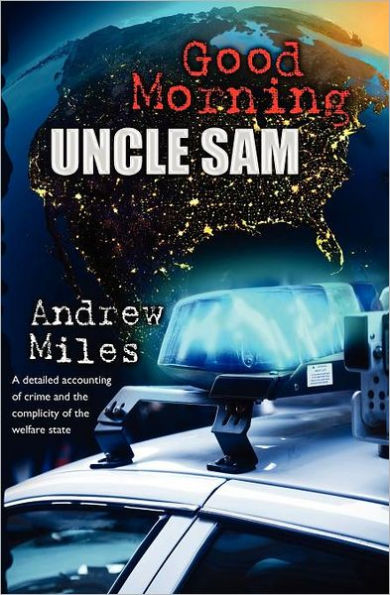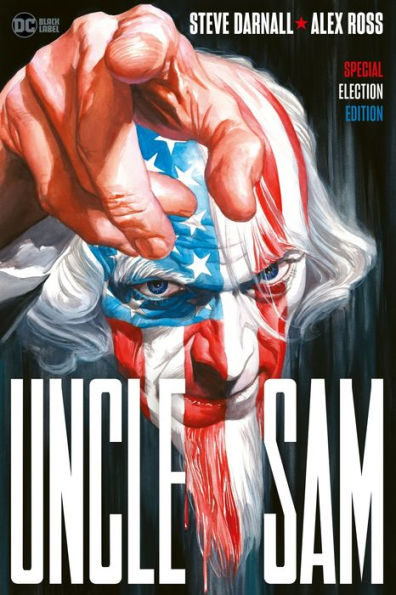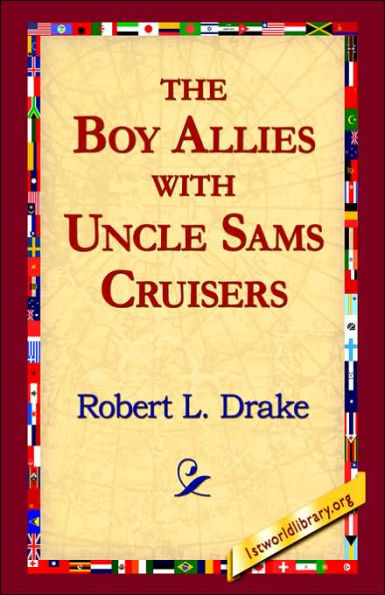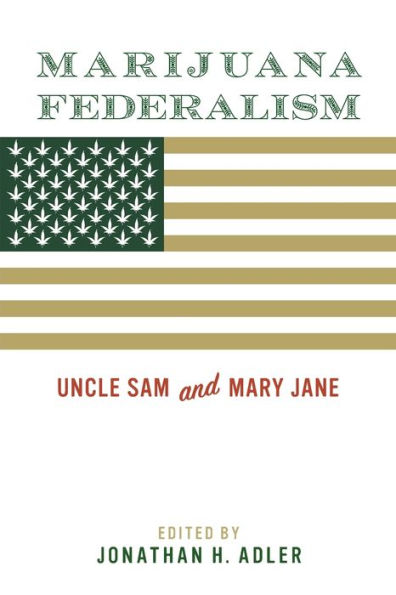Home
On the Lam from Uncle Sam
Barnes and Noble
Loading Inventory...
On the Lam from Uncle Sam in Bloomington, MN
Current price: $19.99


On the Lam from Uncle Sam in Bloomington, MN
Current price: $19.99
Loading Inventory...
Size: OS
Shem Fleenor's
On the Lam from Uncle Sam
is an epic family saga, a page-turning thriller fueled by deeply complex characters, including the federal government. On the Lam from Uncle Sam was partly inspired by great escape stories such as
The Count of Monte Cristo
and
Shawshank Redemption.
But where do escapees from an internment camp run when the entire country is a prison peopled by potential lynch mobs with a grudge against Japanese Americans? Like most historical fiction,
is a rumination of the time it was written. Anxiety associated with what is perceived to be the nadir of the American Dream is central to this story. However, Fleenor's primary motivation in writing On the Lam from Uncle Sam was to accentuate the fluidity of identity - particularly racial and national identity. Who gets to be American, when, under what circumstances, why, and who gets to decide what people and individuals are or are not considered "authentically American" are prominent themes explored in the novel. Anaïs, the story's protagonist, is a teenager with a Mexican American father and Japanese American mother, which makes her identity particularly complex and contested, especially after the Japanese Navy attacks the United States Naval Base at Pearl Harbor, on December 7, 1941. Many themes central to this epoch in American history, as well as the novel here that it helped inspire, remain animating forces in American politics and public life in the twenty-first century. Blood and soil discourse had, for example, by the time
was written, become deeply rooted in American political discourse, especially around issues such as immigration and the perceived dilution of white folks' voting power. The housing crash of 2008 provided many with evidence that the American Dream was more out of reach for most Americans than it was during the Great Depression. The stock market crash of 1929, much like the burst of the housing bubble in 2008, helped give rise to the demagoguery of corporatist politicians portraying themselves as populists.
is, make no mistake, a fun and exciting great escape tale deeply rooted in historical fact. The novel unfolds over five parts and forty-five chapters. Part I delves into the main characters' lives and their families during the Interwar era. The main characters in the story are Anaïs and a grad student named Isamu. Part II of the story focuses on the reactions of the main characters and their families to Pearl Harbor and its aftermath. Part III of the story focuses on Anaïs and Isamu's family's trying to survive incarceration with thousands of other Japanese Americans, as well as a young man from Hong Kong who is mistaken as Nisei by a U.S. State Department not willing to take any chances. Anaïs and Isamu, in Part III, plot their escape. In Part IV, the three primary characters in the story - Anaïs, her mother, Ahmya, and Isamu, escape from camp on Christmas. Still, they must forge a way to survive in a death-defying wilderness in which the entire nation is a cage peopled by potential enemies. Part V of the story concludes the novel by providing a dénouement set in the postwar era.
On the Lam from Uncle Sam
is an epic family saga, a page-turning thriller fueled by deeply complex characters, including the federal government. On the Lam from Uncle Sam was partly inspired by great escape stories such as
The Count of Monte Cristo
and
Shawshank Redemption.
But where do escapees from an internment camp run when the entire country is a prison peopled by potential lynch mobs with a grudge against Japanese Americans? Like most historical fiction,
is a rumination of the time it was written. Anxiety associated with what is perceived to be the nadir of the American Dream is central to this story. However, Fleenor's primary motivation in writing On the Lam from Uncle Sam was to accentuate the fluidity of identity - particularly racial and national identity. Who gets to be American, when, under what circumstances, why, and who gets to decide what people and individuals are or are not considered "authentically American" are prominent themes explored in the novel. Anaïs, the story's protagonist, is a teenager with a Mexican American father and Japanese American mother, which makes her identity particularly complex and contested, especially after the Japanese Navy attacks the United States Naval Base at Pearl Harbor, on December 7, 1941. Many themes central to this epoch in American history, as well as the novel here that it helped inspire, remain animating forces in American politics and public life in the twenty-first century. Blood and soil discourse had, for example, by the time
was written, become deeply rooted in American political discourse, especially around issues such as immigration and the perceived dilution of white folks' voting power. The housing crash of 2008 provided many with evidence that the American Dream was more out of reach for most Americans than it was during the Great Depression. The stock market crash of 1929, much like the burst of the housing bubble in 2008, helped give rise to the demagoguery of corporatist politicians portraying themselves as populists.
is, make no mistake, a fun and exciting great escape tale deeply rooted in historical fact. The novel unfolds over five parts and forty-five chapters. Part I delves into the main characters' lives and their families during the Interwar era. The main characters in the story are Anaïs and a grad student named Isamu. Part II of the story focuses on the reactions of the main characters and their families to Pearl Harbor and its aftermath. Part III of the story focuses on Anaïs and Isamu's family's trying to survive incarceration with thousands of other Japanese Americans, as well as a young man from Hong Kong who is mistaken as Nisei by a U.S. State Department not willing to take any chances. Anaïs and Isamu, in Part III, plot their escape. In Part IV, the three primary characters in the story - Anaïs, her mother, Ahmya, and Isamu, escape from camp on Christmas. Still, they must forge a way to survive in a death-defying wilderness in which the entire nation is a cage peopled by potential enemies. Part V of the story concludes the novel by providing a dénouement set in the postwar era.
Shem Fleenor's
On the Lam from Uncle Sam
is an epic family saga, a page-turning thriller fueled by deeply complex characters, including the federal government. On the Lam from Uncle Sam was partly inspired by great escape stories such as
The Count of Monte Cristo
and
Shawshank Redemption.
But where do escapees from an internment camp run when the entire country is a prison peopled by potential lynch mobs with a grudge against Japanese Americans? Like most historical fiction,
is a rumination of the time it was written. Anxiety associated with what is perceived to be the nadir of the American Dream is central to this story. However, Fleenor's primary motivation in writing On the Lam from Uncle Sam was to accentuate the fluidity of identity - particularly racial and national identity. Who gets to be American, when, under what circumstances, why, and who gets to decide what people and individuals are or are not considered "authentically American" are prominent themes explored in the novel. Anaïs, the story's protagonist, is a teenager with a Mexican American father and Japanese American mother, which makes her identity particularly complex and contested, especially after the Japanese Navy attacks the United States Naval Base at Pearl Harbor, on December 7, 1941. Many themes central to this epoch in American history, as well as the novel here that it helped inspire, remain animating forces in American politics and public life in the twenty-first century. Blood and soil discourse had, for example, by the time
was written, become deeply rooted in American political discourse, especially around issues such as immigration and the perceived dilution of white folks' voting power. The housing crash of 2008 provided many with evidence that the American Dream was more out of reach for most Americans than it was during the Great Depression. The stock market crash of 1929, much like the burst of the housing bubble in 2008, helped give rise to the demagoguery of corporatist politicians portraying themselves as populists.
is, make no mistake, a fun and exciting great escape tale deeply rooted in historical fact. The novel unfolds over five parts and forty-five chapters. Part I delves into the main characters' lives and their families during the Interwar era. The main characters in the story are Anaïs and a grad student named Isamu. Part II of the story focuses on the reactions of the main characters and their families to Pearl Harbor and its aftermath. Part III of the story focuses on Anaïs and Isamu's family's trying to survive incarceration with thousands of other Japanese Americans, as well as a young man from Hong Kong who is mistaken as Nisei by a U.S. State Department not willing to take any chances. Anaïs and Isamu, in Part III, plot their escape. In Part IV, the three primary characters in the story - Anaïs, her mother, Ahmya, and Isamu, escape from camp on Christmas. Still, they must forge a way to survive in a death-defying wilderness in which the entire nation is a cage peopled by potential enemies. Part V of the story concludes the novel by providing a dénouement set in the postwar era.
On the Lam from Uncle Sam
is an epic family saga, a page-turning thriller fueled by deeply complex characters, including the federal government. On the Lam from Uncle Sam was partly inspired by great escape stories such as
The Count of Monte Cristo
and
Shawshank Redemption.
But where do escapees from an internment camp run when the entire country is a prison peopled by potential lynch mobs with a grudge against Japanese Americans? Like most historical fiction,
is a rumination of the time it was written. Anxiety associated with what is perceived to be the nadir of the American Dream is central to this story. However, Fleenor's primary motivation in writing On the Lam from Uncle Sam was to accentuate the fluidity of identity - particularly racial and national identity. Who gets to be American, when, under what circumstances, why, and who gets to decide what people and individuals are or are not considered "authentically American" are prominent themes explored in the novel. Anaïs, the story's protagonist, is a teenager with a Mexican American father and Japanese American mother, which makes her identity particularly complex and contested, especially after the Japanese Navy attacks the United States Naval Base at Pearl Harbor, on December 7, 1941. Many themes central to this epoch in American history, as well as the novel here that it helped inspire, remain animating forces in American politics and public life in the twenty-first century. Blood and soil discourse had, for example, by the time
was written, become deeply rooted in American political discourse, especially around issues such as immigration and the perceived dilution of white folks' voting power. The housing crash of 2008 provided many with evidence that the American Dream was more out of reach for most Americans than it was during the Great Depression. The stock market crash of 1929, much like the burst of the housing bubble in 2008, helped give rise to the demagoguery of corporatist politicians portraying themselves as populists.
is, make no mistake, a fun and exciting great escape tale deeply rooted in historical fact. The novel unfolds over five parts and forty-five chapters. Part I delves into the main characters' lives and their families during the Interwar era. The main characters in the story are Anaïs and a grad student named Isamu. Part II of the story focuses on the reactions of the main characters and their families to Pearl Harbor and its aftermath. Part III of the story focuses on Anaïs and Isamu's family's trying to survive incarceration with thousands of other Japanese Americans, as well as a young man from Hong Kong who is mistaken as Nisei by a U.S. State Department not willing to take any chances. Anaïs and Isamu, in Part III, plot their escape. In Part IV, the three primary characters in the story - Anaïs, her mother, Ahmya, and Isamu, escape from camp on Christmas. Still, they must forge a way to survive in a death-defying wilderness in which the entire nation is a cage peopled by potential enemies. Part V of the story concludes the novel by providing a dénouement set in the postwar era.

















